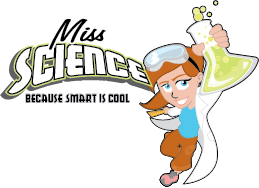Games are a part of American culture – all cultures really. Historically, games were invented prior to written language and have been used as ways to compete, complete tasks, teach and incorporate ideals and morality.
In 2013, I created a STEM and Entrepreneurship curriculum that focused on the science of toys and games. I’ve been fascinated for years about how games can impact learning and my passion has been to help educators make connections to their curriculum by using Game-Based Learning (GBL) with a twist.
When I began, my focus became how to illustrate the importance of games in education. Games have been a part of societies for thousands of years and although the format in which we play games has changed drastically, the core concepts remain the same. Whether prehistorically communicated through speech or written through code, gaming can have a major impact on learning.
As I continued to prep, the larger question became, “How can I boldly inspire educators to activate change?” Since 1998, the ISTE Standards for Students have evolved from learning to use technology to transforming learning with technology, but the common denominator that I hear from educators is that access to technology or tools for learning are not always equitable across districts.
Using technology for GBL doesn’t necessarily mean the outcome is based in technology, but rather using technology to move students beyond engaged learners to empowered learners allows for greater depth of knowledge, creativity and innovation.
For example, playing an online game like Interland creates a great learning experience for recognizing a student’s responsibility while participating in a digital world. Through play they are learning to model safe online behavior and through that play they are following someone else’s design, direction and expected outcomes.
What if students were allowed to deconstruct or reverse engineer a game like Interland in order to construct a game of their own about bullying (or anything else they choose)? Using the idea that every game (high-tech, low-tech or no tech) includes a procedure, end goal and a lesson for its audience, students can become innovative designers with new products or solutions.
The most popular video games today are #1 Fortnite and #3 Grand Theft Auto V, which I would not recommend for educational practices. However, #2 Minecraft has been changing the way we teach for years. Using exploration, quests and real-life application, Minecraft supports student engagement, retention of information and accuracy in problem-solving.
“Can’t old school board games offer the same tasks, complex problem-solving and thinking skills?”
Take for example the most simplistic of board games, Candyland. Just like Minecraft, you have to identify objects, count and follow directions. Although Candyland is a game of chance, there are many other board games on the market that are built on strategy, each with a story or theme.
Another great thing that GBL can teach is failure. When playing a game someone usually has to lose, which most life experiences today don’t offer. Failure through innovation and risk-taking happens when you go beyond playing to create something.
Students have to become creative communicators when designing something for others to use. They have to clearly express what the intended outcome should be for their digital story or game concept. This includes not only building upon skills for verbal and written expression, but students also have to accept constructive criticism and critique to improve their product or solution, which is part of the Engineering Design Process. They need to know and understand that they won’t get it right on the first try and probably not even the second or third.
While GBL has great benefits for students, I believe it is the creation of games (board or digital) that can produce even greater learning outcomes. I’m a true believer that when a student owns something, they can thrive at a greater level and in order for students to have this opportunity it involves some risk-taking on the part of the teacher as well.
It somehow feels unnatural as an educator to not have all the answers or to accept that failure will have to happen. To experience true growth for the student, the teacher has to grow as well. A good teacher will learn from their students just as much as the students have learned from them. If assessment is a must, make it a playful assessment by borrowing some lessons learned from game construction to create a rubric.
I’m very excited to be presenting at the Follett Lunch and Learn during ISTE 2019. Please join us on June 25 at 12 pm (details below). Space is limited so register now. I will share with educators how they can activate change through the business of game design. Understanding the connections between tabletop games created by Milton Bradley to digital storytelling with Bloxels, we will focus on how game design through entrepreneurship can support core subjects such as ELA, Social Studies and STEM, while helping students to develop social and emotional skills through the 4Cs of 21st-Century Learning.
My goal is that through practical application of GBL, participants will be inspired with their own plan to activate change within their learning communities.
See you in Philly!
Posted on Follet Community: https://www.follettcommunity.com/s/article/going-beyond-game-based-learning-the-benefits-of-becoming-a-game-creator
